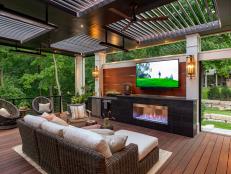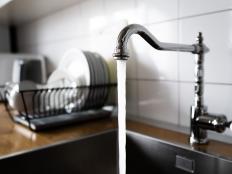Home Automation and Control Systems

Jim Schmid Photography
Many homeowners start a second shift the minute they arrive home—patrolling and tuning their lighting, HVAC, security and other home systems. But there's a simpler, more efficient and potentially much more economical way to control the systems in your home, via today's highly sophisticated home automation and control systems. With various pricing tiers and levels of complexity to choose from, it's likely there's a system that will fit your budget and your home's needs nicely.
Put simply, a home automation system integrates several electronic devices with one another. The various systems controlled through home automation are often connected to the home's computer network, allowing homeowners to control the components remotely from their computers or mobile devices like smartphones and tablets.
The main system categories controlled by home automation are lighting, security, HVAC and outdoor sprinkler systems.
Systems that control lighting often operate on a timer, so that some or all house lighting turns on or off at predetermined times. The primary benefit of lighting automation is energy efficiency, but this feature may also be viewed as a security benefit, as a well-lit house may be less of a target for criminals. Automated home lighting systems require a connection to the home's electrical grid; they may be controlled remotely or via in-home control panels and remote controls. A fully integrated lighting control system connected to a whole-house automation system can be quite costly, whereas a standalone system will cost considerably less.
Home security systems are widely available and relatively affordable. They can be integrated with an existing whole-house automation system or designed to operate separately. They offer varying levels of complexity, from simple detectors that monitor door and window security to complex combinations of motion detectors, cameras and even facial recognition technology.
Heating, ventilation and air conditioning can also be controlled via home automation systems, often with excellent energy-saving benefits. Homeowners can regulate the temperature in their entire homes or even in individual rooms or zones, and create a temperature calendar and schedule based on everything from weather predictions to an upcoming visit from a Great Aunt who likes it particularly toasty in the guest room.
Automated outdoor sprinkler systems are also often offered as part of home automation and control, as they eliminate the need for clunky and ineffective standalone sprinklers or time-consuming manual watering. They can even be adjusted to respond to weather changes automatically, ensuring increased watering during dry stretches and shutting down to conserve water during periods of heavy rainfall.
Home automation and control systems offer great benefits of convenience, cost and time savings. Depending on your budget and the needs of your home, an integrated whole-house automation system or a series of standalone systems may be the right choice. Regardless of which approach you choose, it's likely you'll see immediate returns both economically and in terms of increased free time.
See Also: How to Plan a Home Control System
















































